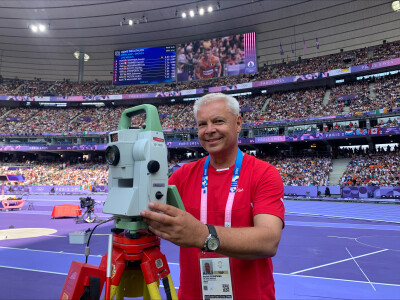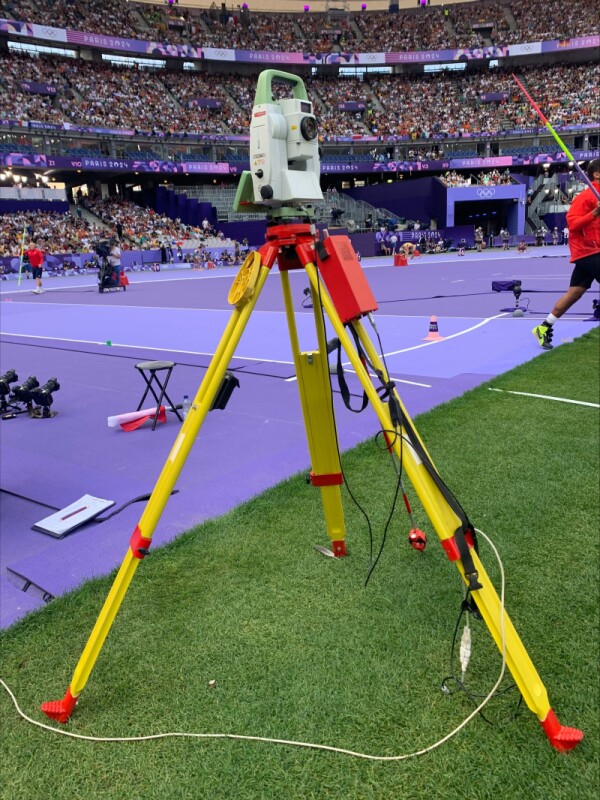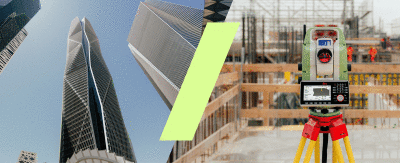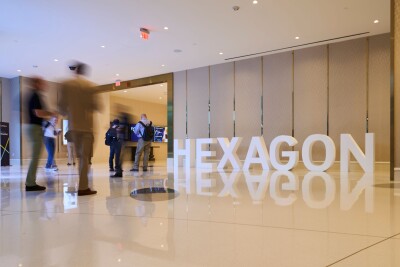Contributed by Hans-Martin Zogg, Business Director TPS, Geomatics Division at Leica Geosystems, part of Hexagon
In the world of competitive athletics, victory or defeat can hinge on mere millimeters. Gone are the days of relying on measuring tapes for such critical measurements. Modern technology ensures fairness and pinpoint accuracy at local competitions as well as the grand stage of the Olympic Games.
Precision sensor technology is a natural part of sport today. Whether football, ice hockey, Formula 1, alpine skiing or athletics – high-precision measuring instruments and special software are used everywhere to ensure fair decisions and accurate results at the most crucial of times when they have to be right.
In athletics, technology from Leica Geosystems, part of Hexagon, has been used for measuring distances and heights for more than 30 years. The latest technology along with custom software help officials in measuring various disciplines including long jump, triple jump, shot put, javelin throw, discus throw, hammer throw, high jump and pole vault. Stationed at the sidelines, the total stations measure and record the precise distances that will determine the medal winners and perhaps even a new World Record.
From tape measures to total stations
Before the introduction of laser measurement devices, judges and officials had to rely on more rudimentary methods of measurements. In the pre-1990s, manual measurements with measuring tapes were the norm for track and field events.
Total stations have been used in athletics events since the late 1990s, where laser measuring devices were first employed for distance measurements in competitions. These devices were still verified against traditional steel tapes to ensure accuracy during events like the hammer throw. However, from the 2010s onwards, high-precision total stations have become the standard for elite sporting events.

While Fully Automatic Timing (FAT) systems are used to accurately time track events, total stations are specifically designed for precise distance measurements. Total stations are typically used in a surveying context yet these devices have an unsung, but crucial, role in high-stakes sporting environments. Here, the accuracy of the measurement equipment could be the difference between gold and silver or staying in the running and disqualification.
Rapid results for when accuracy is crucial
A total station calculates precise and quick measurements for athletics. The device emits a laser beam that reflects off a prism, secured to a pole, and placed at the landing point of the throw or jump. The total station measures the slope distance and angles to the prism. From this, it provides a direct readout of the distance at the press of a button. Typically set up relative to the throwing circle or reference line, the total station operates within a predefined coordinate system, offering X, Y, and Z coordinates of the landing point for comprehensive and accurate final distance data.
Events unfold rapidly, demanding immediate results, but the judges and officials themselves usually aren’t trained surveyors so are often unfamiliar with total stations.
Fortunately, there are bespoke total station apps designed for taking measurements at athletics field events. This way, judges and officials only need a basic understanding of the process.
Officials must maintain unwavering focus over extended periods while remaining unobtrusive. So, having a tool that calculates distance measurements, almost automatically, means they can focus more on officiating rules. Nowadays, the total station software uses complex mathematical formulas to deliver instant, discipline-specific results in a user-friendly interface. Total stations’ robust, weather-resistant design guarantees reliability in various conditions. Moreover, all measurements are logged, preventing any possibility of manipulation in either measurement or data transmission.
The future of fair play
As athletics continue to evolve, so too will the technology that ensures its integrity.
In the end, it's not just about determining winners and losers. It's about honoring the dedication and skill of athletes by ensuring that every millimeter of their effort is precisely captured and fairly acknowledged. With technologies like the total station, we can be confident that in the world of athletics, every performance gets the exact measure it deserves at the most crucial of times.






